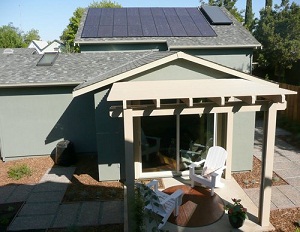Solar leases can reduce solar incentives while saving homeowners money
 That’s a key takeaway from a new study by the Climate Policy Initiative, which looked at how solar leasing and other third-party ownership (TPO) programs in California have led to a residential solar boom there. The report looked at the confluence of events that have allowed the residential solar market to expand even while the incentives that supported its growth have shrunk.
That’s a key takeaway from a new study by the Climate Policy Initiative, which looked at how solar leasing and other third-party ownership (TPO) programs in California have led to a residential solar boom there. The report looked at the confluence of events that have allowed the residential solar market to expand even while the incentives that supported its growth have shrunk.
The biggest key to success in California’s residential solar market are TPO options. “Consumers are used to electricity as a service,” said Uday Varadarajan, senior analyst at Climate Policy Initiative and co-author of the recent study. “The boom in solar leasing shows that policy can support the expansion of renewable generation in a cost effective way while meeting the needs of consumers.” The leases and TPO options offer homeowners a way to simplify the often complex process of self-financing a solar array and transforming it into a service—just like a normal electric bill—that can save them money.
The report observed that in California, the nation’s most populous state, more than 75 percent of the state’s residential solar arrays are leased. “Interestingly, this growth has happened in the face of declining financial incentives for solar installations at the state level through the California Solar Initiative,” according to the new study. But it has also occurred while the costs of PV modules have fallen significantly and while both the state and federal government have offered subsidies for solar.
The study found that leased solar arrays now cost federal taxpayers about the same as purchased systems. The report said this is because of system costs, bill savings and state incentives. “Higher savings and higher state incentives can translate into more generous federal tax incentives for leased systems. However, while leasing initially resulted in higher solar prices, and therefore, higher taxpayer costs for federal investment incentives, our analysis of the California experience suggests that the premium associated with leased systems has disappeared over the last two years,” it said.
The report added that declining state incentives are also likely attributable to for the cost to taxpayers. “The California Solar Incentive (CSI) was a production-based, up-front incentive for solar deployment that declined in a predictable way with increased deployment. Our analysis suggests that the decline of the CSI helped bring down prices for rooftop solar in California more than can be explained by time trends, declines in solar PV module costs, or other factors,” the report said. Since the federal tax incentives are tied a system’s costs, the decline in system pricing has also reduced the amount that the federal government has to put up for residential PV.
The report also found that reducing up-front incentives have driven more people to lease a PV array. Since the up-front incentives are now covering less of the up-front costs, the idea of paying nothing up front for solar becomes even more appealing, even if the homeowners know they may have to pay slightly more over time.
As such, the study advocates for solar leasing in more markets, even though not all states yet allow leasing. “By providing more ways for customers to finance rooftop solar and minimize their transaction costs, states that permit leasing may enable greater solar deployment,” it said. The report also encouraged states to enact incentives that decline in-line with deployment levels to ensure that there’s pressure on installers and leasing companies to lower prices.
The report also made other recommendations, among them, increase leasing and pricing data availability and comparability, address permitting and other soft costs of solar and minimize or eliminate the need for expensive tax equity to reduce financing costs.



